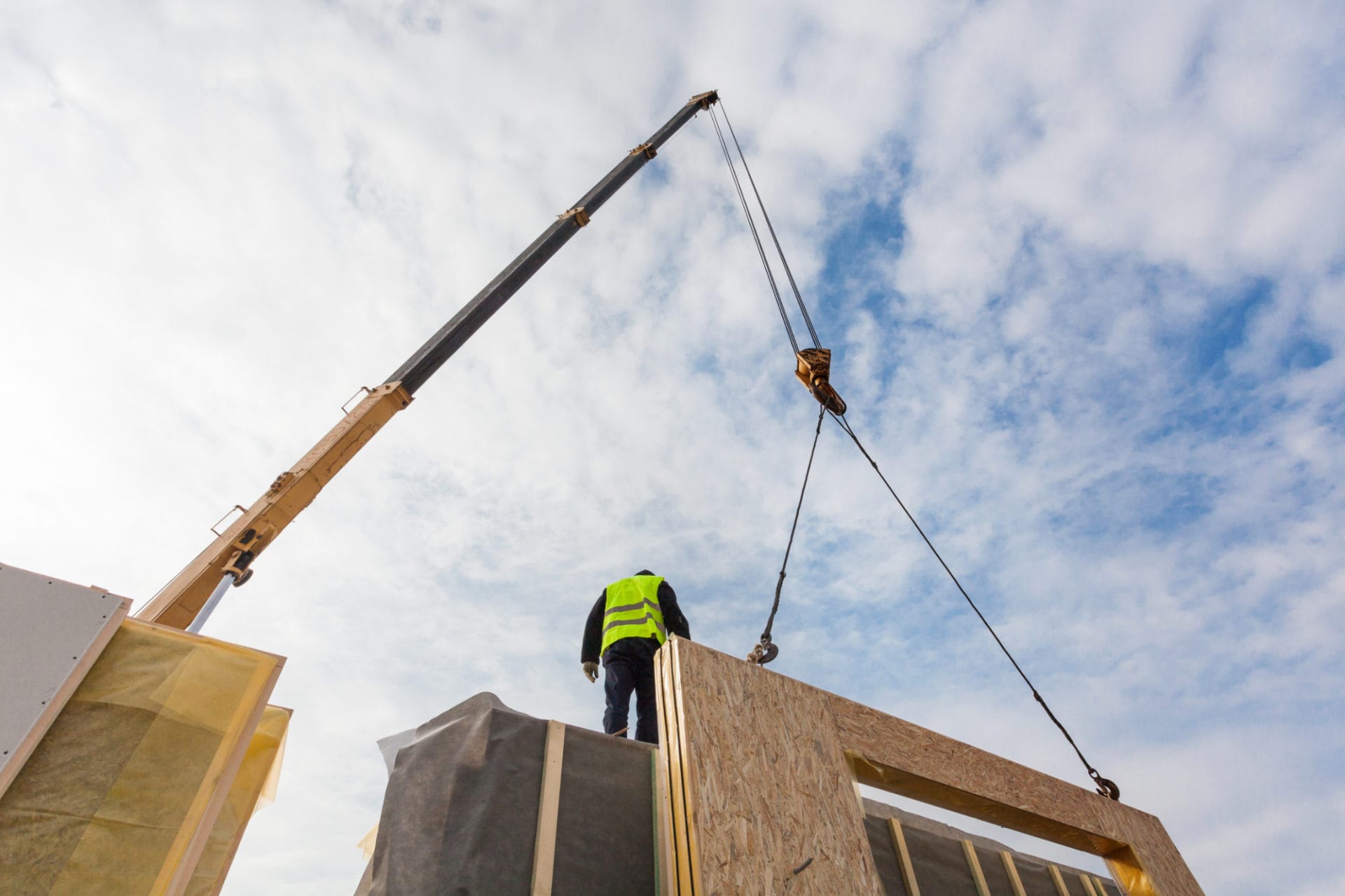
Partner
Head of Energy & Infrastructure | Projects, Infrastructure & Construction | Real Estate
This website will offer limited functionality in this browser. We only support the recent versions of major browsers like Chrome, Firefox, Safari, and Edge.
Volumetric modular construction is a form of off-site construction in which buildings are put together by connecting a series of fairly large pre-built sections, or ‘modules’. It’s often referred to as prefabricated building, although strict definitions may vary somewhat from source to source.
Volumetric construction of this type can be achieved in a variety of ways, but most commonly it involves stacking and/or adjoining factory-finished modules to create a broadly ‘finished’ building. In a majority of cases, a full modular assembly will require relatively little additional superstructure work in order to render the building complete and functional. (This will, however, alter to some extent between different projects, clients and styles).
This quick, efficient and straightforward approach to modern construction provides a number of significant benefits to planners, developers and assembly teams alike. Chief among these are often said to be:
To this end, a recent study by AMA Research reported by the Offsite Hub predicts that Prefabricated volumetric building systems will grow by 14% between 2020 and 2024.
In this quick guide, we’ll therefore be taking a closer look at some of these important volumetric construction advantages. We’ll also be highlighting any key areas for further consideration when deciding to pursue this type of modular build, and which aspects of modular planning and development projects we can assist you with.

As noted in the general definition in the opening section of this guide, there are various volumetric construction advantages worth bearing in mind.
Moreover, as you’ll see from the list outlined below, several of these benefits are directly linked to the core question ‘what is volumetric construction?’. After all, the many strengths of this increasingly popular development approach are frequently highlighted as inherent characteristics of any modular building project.
Because it’s typically so much faster to put up a modular building using volumetric construction techniques, planning and delivery are both far easier to complete within a specific – and, crucially, far shorter – timeline. As a general ballpark figure, conservative estimates tend to put average shipping and install times for volumetric construction projects at as little as half that of a traditional build.
This is largely thanks to the fact that modular units are produced off-site in factory conditions, using an efficient and highly cost-effective blueprint. Factory construction means that the physical assembly and finishing of these units is heavily automated under strictly controlled environmental conditions.
It is therefore generally accepted that this in turn can lead to better all-round efficiency, quality and consistency of the finished units. That said, the market still has a wide range of modular products of varying quality and the technical specifications of a product will need to be considered alongside other aspects such as the availability of insurance/product warranties.
Again, because volumetric construction involves doing much of the initial building, assembly and even finishing work off-site under controlled factory conditions, costs can be more efficiently managed and kept under stricter control. There are several important factors that allow for more efficient cost control on modular builds.
Environmental control and consistency in factory environments means that assembly isn’t subject to delays from inclement weather. Projects are also far less susceptible to delays incurred through mid-build planning alterations, or other unforeseen problems with on-site delivery schedules.
Furthermore, the cost savings of modular builds can increase exponentially with production scale, as factory assembly based on ‘template’ builds means that approved designs can be reused and mass produced quickly and easily. When tooling and machinery settings don’t need to be significantly altered between projects and production runs, these savings can grow rapidly, making it easy to achieve much faster output at significantly lower cost per unit. Adopting Design for Manufacture and Assembly here also facilitates more cost effective use of materials and processes.
The enhanced efficiency of these heavily mechanised production lines means that both material waste (due to miscalculation, spoilage, theft, vandalism etc) and unnecessary labour costs can consistently be reduced to an absolute minimum. Impact on the environment at the installation site is also dramatically reduced.
Longer-term, in addition to a greener approach to material use during the key construction phases, finished volumetric construction buildings are often designed to be run much more economically from an energy efficiency standpoint.
While the advantages of a volumetric construction approach are clear, there are also a few further considerations worth bearing in mind for any such project vs. a more traditional approach to designing and installing buildings on-site.
These include:
Because modular builds will typically be transported to the site and installed as more or less ‘complete’ units, it’s important to ensure that all aspects of the project have been thoroughly assessed from a troubleshooting perspective beforehand.
The delivery and installation phase moves very quickly once the finished unit comes off the production line, and any unforeseen delays at this point can be costly in terms of budgets and project lead times alike. In particular, it’s vitally important to plan for the physical logistics and delivery stages of the project from the very beginning - access to the site must allow for straightforward delivery and unloading of exceptionally large/heavy loads.
While the planning phase of a volumetric construction design can accommodate almost any bespoke features or changes required to meet the demands of a particular project, once designs have been finalised they can be difficult to alter without incurring significant added cost and reduced overall efficiency.
Increased savings at higher production scales mean that it can be very difficult to incorporate alterations to blueprints once designs have been finalised and modular fabrication has begun. "Design freeze" is therefore an important part of volumetric construction.
In the short-term, issues you’ll need to navigate on a volumetric construction project might include differences in the way mortgages and loans are handled vs. those for traditional homes.
In particular, there will often be more phases and parties involved in the financial arrangement than you’d typically need to consider - construction firms and contractors, land costs and restrictions, ongoing mortgage agreements, insurance requirements - with a relatively simple change of ownership on an existing property.
Longer-term, there can be implications for perceived resale value of modular buildings. As product choice and consequently quality, reliability and consistency continue to improve across the volumetric construction industry as a whole, this is beginning to change. However, outdated views on the general build quality and permanence of modular buildings (some people still equate them, inaccurately, with ‘mobile’ buildings) can still be an issue for certain potential buyers.
At Foot Anstey, our experienced cross-sector team is ideally placed to advise and assist on all aspects of volumetric construction. We’re able to work directly on almost all planning and delivery phases of modular build projects with funders, developers, suppliers, and public sector bodies (such as housing associations) alike.
Key areas of expertise among our team include: